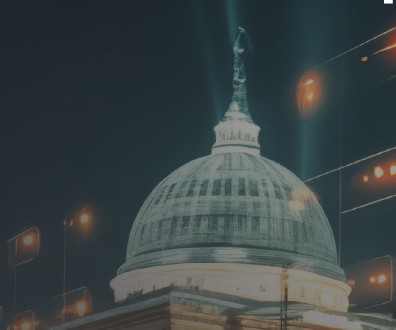Getting Ready for Federal Disaster Mitigation Money

In this Aug. 25, 2016 photo, debris from gutted homes line the streets of Baton Rouge, La. AP Photo/Max Becherer
COMMENTARY | Local government officials need plans for when Community Development Block Grant dollars begin to flow.
Failing to plan is planning to fail. While the delay in the release of federal disaster recovery funds can be frustrating for state and local officials, the most recent lag provides them with extra time to maximize the impact of federal resources by coordinating efforts among stakeholders ahead of time. States and local governments have a unique understanding of their people, land, ecological systems, environmental impacts from changing climates, economies, and socio-economic conditions. With proper funding and resources, they are best suited to identify long-term, risk-reducing solutions that will meet current challenges and address future risks.
As anticipation builds around the release of an official Federal Register Notice from the U.S. Department of Housing and Urban Development (HUD) detailing guidelines for how Community Development Block Grant Mitigation (CBDG-MIT) funding must be spent by selected state and local governments, there are a few immediate steps officials can take to prepare:
Anticipate low or moderate income household expenditure requirements
It is likely that HUD’s notice will require a majority (likely 70%) of all CDBG-MIT funding to be spent on activities that benefit low- or moderate- income (LMI) households. Given this requirement and opportunity, government officials will need to consider how all CDBG-MIT policies, plans, and projects may or may not be beneficial to low- to-moderate income households. They will also need to extend considerations to other vulnerable populations when coming up with methods of distribution, eligibility criteria, and selection processes for resource allocation in the wake of disasters.
Consider planning expenditure limitations and opportunities
Traditionally under CDBG-DR, HUD has limited planning and administration expenditures to up to 20% of an awarded grant – with up to 5% of the grant accounting for administration costs. While historically most grantees have not used the remaining 15% of their CDBG-DR award for planning activities, the benefits of comprehensive planning in the context of mitigation and resilience efforts may factor into how you develop your approach and budget for the CDBG-MIT allocations. Spending federal funds on extensive planning efforts may help state and local government officials ensure the effects and decisions around the CDBG-MIT funds are sustainable and solid enough to last for longer than the grant.
Don’t redo assessments that have already been done
States, local governments, municipalities, and communities face disaster-related risks that have likely already been identified and assessed in multiple risk assessments, hazard portfolios, hazard mitigation strategies, disaster resilience plans, and other similar compilations. A diverse collection of agencies and organizations likely have been spending years – if not decades – collecting and analyzing the impact of storm events, and other relevant data to understand the risks specific to location and scale. Government officials anticipating CDBG-MIT assistance, in particular, should consider partnering with other stakeholders to assess which risks apply to their specific cases. They should address risks in ways that reduce costs and improve efficiencies by:
- not re-creating or re-procuring information or analysis already available;
- identifying the need for updated information and/or gaps in existing plans or assessments;
- making informed programmatic and policy decisions with the CDBG-MIT allocation; and
- building on existing mitigation or resilience efforts.
Identify what to accomplish with the CDBG-MIT funding
State and local government officials should set fundamental, high-level goals for what to accomplish with any anticipated CDBG-MIT assistance. These goals should be rooted in the identified risks and an understanding of different levels of risk. A few outcomes for government officials to consider include:
- implementing statewide policies that reduce risks on a more permanent basis, such as amending the statewide building code to include higher elevation standards for all structures built in the Special Flood Hazard Area or prohibiting the use of fill to elevate structures in the SFHA;
- making tools, data sets, model policies, and practices more user-friendly and available to state or local governmental agencies with permitting authority – and extending these tools to developers, residents, and businesses to help them make more informed decisions on proposed projects; and/or
- providing statewide technical assistance and training to state legislators, local governments’ elected officials, and government staff so they understand some of the critical risks and opportunities in their respective communities.
The frequency and intensity of disaster events is growing in parallel with unprecedented levels of public assistance being made available to state and local governments through CDBG-MIT and other programs. That’s why it is critical for government officials at all levels to invest in transformative planning and coordination practices that directly address proactive ways to mitigate current and future risks. By devoting the time on the front-end to thoughtful and comprehensive planning, government officials will be better prepared to implement meaningful projects and policies using CDBG-MIT assistance. More importantly, they will be able to enact and institutionalize more sustainable policies and practices, reduce risks, and decrease the chances of leaving communities in harm’s way without necessary resources.
Lauren Nichols is a Senior Disaster Recovery Policy Manager at ICF. Brandy Bones is a Senior Director of Recovery and Resiliency Programs at ICF.

NEXT STORY: The proper infrastructure will determine the Federal Data Strategy’s success





